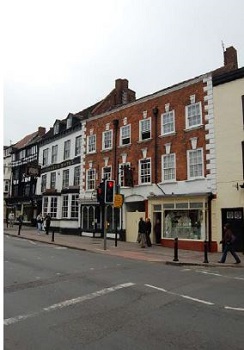The George Hotel, Load Street, Bewdley, Worcestershire. Historic Building Record and Watching Brief
Birmingham Archaeology, 2017. https://doi.org/10.5284/1046295. How to cite using this DOI
Data copyright © University of Birmingham unless otherwise stated
This work is licensed under the ADS Terms of Use and Access.
Primary contact
Historic England
1 Waterhouse Square
138-142 Holborn
London
EC1N 2ST
UK
Tel: 01793 414700
Fax: 01793 414707
Resource identifiers
- ADS Collection: 2904
- DOI:https://doi.org/10.5284/1046295
- How to cite using this DOI
Introduction

Birmingham Archaeology undertook a programme of Historic Building Recording (HBR) in October 2007 at The George Hotel, Load Street, Bewdley, Worcestershire in advance of refurbishment works.
The work was required as a condition of Planning and Listed Building Consent and was undertaken in response to a Project Brief: ‘Requirements for a programme of Historic Building Recording and Archaeological Watching Brief at The George Hotel, 64 Load Street, Bewdley, Worcestershire’, prepared by the Historic Environment Planning Advisor for Worcestershire County Council.
The George Hotel as it presently stands constitutes two buildings No. 63 and No. 64 Load Street. These have subsequently been joined to form the expanded Hotel as it is presently seen. Historic building recording revealed five phases of development. The original structure on No. 63 Load Street was constructed in the early-17th century and historical evidence suggests it served as a bakery. Additions to the structure occurred to the rear in the late- 17th to 18th century by which period it had converted to its present use as a hotel. The addition of an assembly room to the rear occurred in the late-18th century. Various alterations occurred during the late-18th to early-19th century including the addition of bow windows at the front of the building.
No. 64 Load Street was constructed in the mid to late-18th century and this is supported by dendrochronological study of the roof timbers which date to the period 1745—70. During the 19th century this appears to have been gradually incorporated into No. 63 until the present arrangement of 1/3 of the ground floor and 2/3 of the first floor were incorporated. Otherwise little alteration occurred throughout the 19th century and this reflects a general downturn in the prosperity of Bewdley as a whole.
The building as a whole was extensively remodeled in the 1960s and this has resulted in the loss of original features within the building as well as the boxing in of other features. The watching brief revealed no features that added information about the development or fabric of the building external to the main building.







